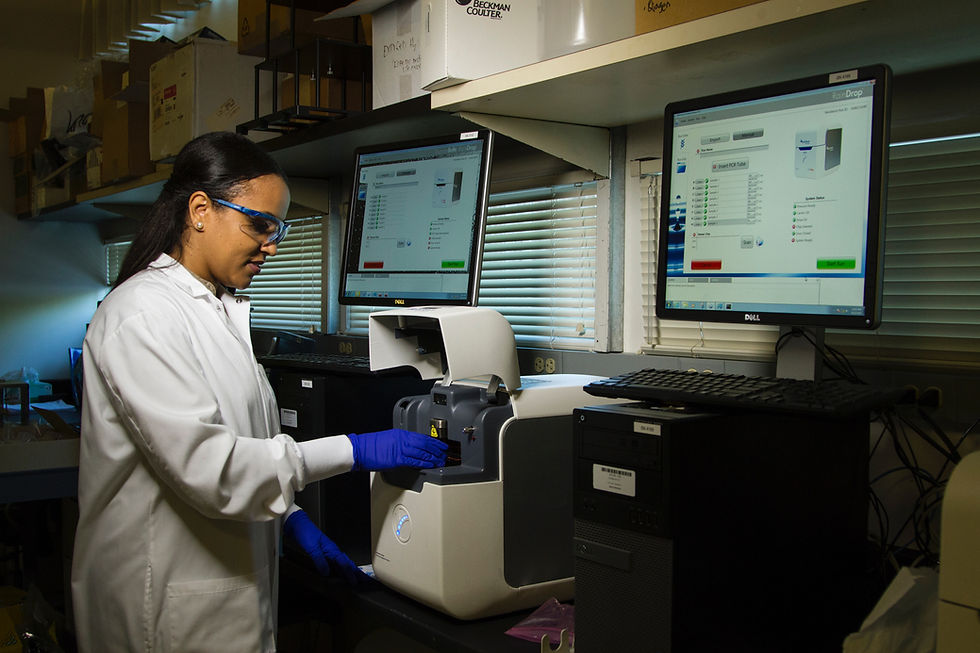Exploring Data Scraping: How to Extract, Analyze, and Apply Web Data
- info058715
- Feb 13
- 6 min read
In the digital age, data is the backbone of nearly every aspect of our lives. From business decisions and research studies to personal recommendations and targeted advertising, data plays an essential role in shaping our world. However, the volume of data available on the web is vast, and accessing it can sometimes be a complicated and time-consuming process. This is where data scraping comes into play. Data scraping is the process of extracting data from websites, documents, or other unstructured formats and transforming it into a structured, usable form for analysis or other purposes. In this article, we will explore the concept of data scraping, its methods, legal considerations, ethical concerns, and its various applications.
What is Data Scraping?
Data scraping, also known as web scraping or web harvesting, refers to the technique of extracting data from websites using automated tools or software. Web scraping is commonly used to collect large quantities of information from publicly accessible web pages, making it easier to aggregate, analyze, and use the data.
While data scraping can be used to gather any type of data—such as text, images, links, or metadata—it's especially useful for extracting structured data such as product prices, reviews, news headlines, or stock prices. This information can then be processed and transformed into a structured format, such as a spreadsheet, database, or JSON, for analysis or integration into other applications.
Web scraping involves several key components:
Crawling: This is the process of navigating the web by accessing web pages in a systematic manner. A web crawler or spider follows links from one page to another to gather data.
Parsing: Once a web page is accessed, the data needs to be parsed. Parsing refers to extracting meaningful information from the raw HTML or XML structure of the page.
Data Extraction: The relevant data is extracted from the parsed content, such as text or images, and converted into a usable format.
Storage: The extracted data is stored in a structured format, such as CSV files or databases, for further analysis or use.
Methods of Data Scraping
There are various methods for scraping data, each with its own advantages and use cases. Let's examine some of the most commonly used techniques:
1. Manual Scraping
Manual scraping involves manually copying and pasting data from a website into a spreadsheet or other software. While this method may work for small-scale data extraction tasks, it is time-consuming, inefficient, and prone to human error. As such, manual scraping is typically not suitable for large or dynamic datasets.
2. HTML Parsing
HTML parsing is one of the most common methods of web scraping. It involves parsing the raw HTML code of a webpage to extract specific pieces of data. Web scraping tools like BeautifulSoup (Python), Scrapy, and Cheerio (JavaScript) are used to simplify this process by offering an easy-to-use interface for parsing HTML tags.
In HTML parsing, the tool searches for specific HTML elements, such as <div>, <span>, or <a> tags, which contain the desired data. This method is particularly effective when the data is clearly structured on the web page.
3. API Access
Many websites and platforms offer APIs (Application Programming Interfaces) that allow users to access structured data in a more organized and efficient way. APIs are designed to provide data directly from a website or service, often in formats like JSON or XML, which are easy to parse and process.
While APIs offer a cleaner and more reliable method of extracting data, they are usually limited in scope by the website's terms of service or the API's rate limits. However, APIs are a great choice for extracting large amounts of data from sites that provide them.
4. Headless Browsers
Headless browsers are web browsers that run without a graphical user interface (GUI). They can be used for scraping dynamic content that requires interaction, such as filling out forms or navigating through JavaScript-generated pages. Headless browsers like Puppeteer (JavaScript) and Selenium (Python, Java, etc.) are particularly useful when working with websites that rely heavily on JavaScript to load content.
Headless browsers simulate real user interactions, which can help bypass some of the limitations of traditional scraping techniques, such as sites that block or limit requests from bots.
Applications of Data Scraping
Data scraping plays a crucial role in many industries and fields. Here are some of the key applications:
1. Price Comparison and E-Commerce
Online retailers, travel agencies, and comparison websites rely heavily on web scraping to track competitors' prices and monitor market trends. By scraping product pricing and availability data from competitors’ websites, businesses can adjust their pricing strategies to stay competitive.
For example, a price comparison website may scrape the prices of various electronic devices across multiple online stores to present users with the best deals.
2. Market Research and Competitive Intelligence
Businesses use data scraping to gather insights about competitors, customer sentiment, market trends, and industry developments. For example, scraping reviews, social media posts, and forum discussions can help companies understand public perception of their products and services.
Competitive intelligence is another area where scraping is widely used. By extracting publicly available data from various websites, businesses can monitor their competitors' online presence and identify opportunities for growth.
3. News Aggregation and Content Curation
News aggregators and content curation platforms use web scraping to gather articles, blog posts, or social media content from a wide range of sources. These platforms automatically collect data, categorize it, and present it to users based on specific topics or interests.
For instance, a finance website may scrape news articles about stock market performance and generate daily summaries for users.
4. Real Estate and Job Listings
Real estate websites often use data scraping to collect listings from various sources, such as Zillow or Realtor.com, to present a wider range of properties to potential buyers. Similarly, job boards aggregate job postings from different websites, creating a comprehensive listing of employment opportunities.
5. Scientific Research and Data Analysis
Researchers in fields such as economics, sociology, and environmental science can use data scraping to gather large datasets for analysis. For instance, scraping government websites for census data or scraping academic publications to track new studies can provide valuable insights for research projects.
Legal and Ethical Considerations
While data scraping offers numerous benefits, it also raises important legal and ethical questions. Websites have different policies regarding the use of their data, and scraping can sometimes violate those policies. Here are some key legal and ethical considerations:
1. Terms of Service
Most websites have a terms of service (ToS) agreement that outlines the rules for using the site, including restrictions on scraping or automated access. Violating these terms can result in legal action, including lawsuits or being blocked from accessing the site.
2. Intellectual Property Rights
Data scraping may involve the extraction of copyrighted content, such as text, images, or videos. Scraping copyrighted material without permission could result in intellectual property infringement and legal consequences.
3. Privacy Concerns
Scraping personal data, such as names, contact details, or sensitive information, without the consent of the individuals involved, raises privacy concerns. This can lead to violations of data protection regulations, such as the General Data Protection Regulation (GDPR) in the European Union.
4. Server Load and Ethical Use
Web scraping can put significant strain on a website's server resources, especially when scraping large amounts of data. Scraping too frequently or too aggressively can cause performance issues for the website, which is why it's important to follow ethical scraping practices, such as using rate limiting or respecting the site's robots.txt file.
Conclusion
Data scraping has become an indispensable tool in today’s data-driven world. It empowers businesses, researchers, and individuals to access valuable data from the vast ocean of information available online. Whether it's for price comparison, market research, or content aggregation, scraping allows users to gather data efficiently and at scale.
However, it is important to approach data scraping with awareness of the legal and ethical considerations involved. Following best practices, respecting website terms, and avoiding harm to others are essential for responsible and sustainable data scraping. As the world continues to generate an ever-increasing amount of data, the role of web scraping will likely continue to evolve, unlocking new possibilities for innovation and insight.





Comentarios